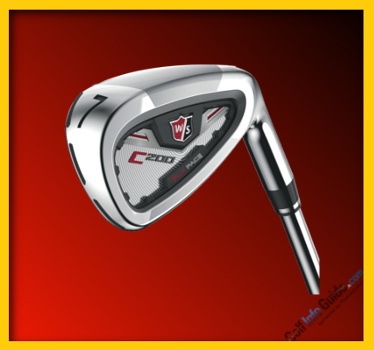- FLX Face Technology:Minimizes contact points between the thin face and club head for maximum face flex upon impact.
- Power Holes:Allows the face to flex upon impact for extreme distance.
- TE031 Urethane:Fills Power Holes for improved sound and feel.

In keeping with the F-C-D theme, the C200 irons also fall in the Crossover category. The main difference between the C200’s and the FG Tour F5’s is the material. Where the FG Tour F5’s were a forged steel, the C200’s are a cast steel. Other than that, the two probably appeal to a lot of the same skill level of golfer. Another small difference is the look at address. The C200’s have a thinner top line which is something better ball strikers like to see. This to me is a bit confusing. Thin top line is usually seen on a forged head and thick top lines are usually on a cast head. These irons are flip-flopped for some reason.
When you first pick this club up and address the ball, you can’t help but notice the appearance of black urethane material interspersed around the perimeter of the club. This material is meant to fill the holes cut out to make the face flex more at impact, producing greater ball speed and distance with less effort.
The cast material has a different sound and feel from the forged FG Tour F5’s but this is not a surprise. The black urethane should serve as a bit of a dampener when it comes to clunky feeling mishits.
Here are some of the features of this iron:
Specifications
Set consists of 4 iron through PW (3 iron and SW special order only and RH only)
Steel shafts are KBS Tour 90 (reg. and stiff ). Graphite shafts are Aldila Rogue Pro (light, reg. and stiff)
In a way this iron makes sense to me. Classified as a cavity back, game improvement iron made of cast steel and offering practical distance with above average forgiveness, it is what it is. The FG Tour F5 irons reviewed previously are the ones that are a bit out of place, if only because of their forged material.





